The cost of hair restoration in the United States varies significantly based on several factors, including the surgeon’s experience, the number of grafts required, and the technique used.
A successful hair transplant procedure is not just about the cost; it’s an investment in one’s appearance and self-confidence. The art of hair restoration surgery depends on the surgeon’s artistic hairline design, meticulous harvest and placement techniques, and adherence to postoperative care instructions.
Understanding the factors that influence the total cost of hair transplant procedures is crucial before committing to the surgery. While prices vary across the country, this guide will help readers make informed decisions about their hair restoration journey.
Key Takeaways
- The cost of hair transplant in the USA varies based on several factors.
- Surgeon’s experience and technique used impact the total cost.
- Hair transplant is an investment in appearance and self-confidence.
- Understanding cost components is crucial before committing to surgery.
- Prices vary significantly across different regions in the USA.
- This guide helps readers make informed decisions about hair restoration.
Understanding Hair Transplant Procedures
Modern hair transplant procedures offer a viable solution for individuals looking to restore their hairline. A hair transplant is a surgical procedure that involves relocating hair follicles from donor areas, typically the back and sides of the head, to balding or thinning areas.
What is a Hair Transplant?
A hair transplant treats male pattern baldness by moving hair follicles from the donor area to the bald regions. The process has three stages: extraction, implantation, and healing. During extraction, hair follicles are removed and prepared for transplantation. They are then placed into small incisions on the scalp using a small needle, stimulating the growth of new hair based on genetics.
Common Hair Transplant Techniques
There are several hair transplant techniques available in the USA, including FUE (Follicular Unit Extraction) and FUT (Follicular Unit Transplantation). FUE involves extracting individual follicular units directly from the donor area, while FUT involves removing a strip of hair-bearing skin from the back of the head, which is then dissected into individual follicular units.
The choice between FUE and FUT depends on the patient’s specific hair loss pattern, donor hair availability, and desired outcomes. Technological advancements have improved these procedures, making them more effective and less invasive.
The key differences between these procedures lie in their methodology, recovery time, scarring, and suitability for different patients. Understanding these differences is crucial for patients to make informed decisions about their hair restoration.
How Much is a Hair Transplant in USA: Average Costs
For those considering hair transplantation, knowing the average costs across different regions in the USA is essential. Hair transplant surgery is a significant investment, and understanding the factors that influence its cost can help individuals make informed decisions.
National Price Range Overview
The average cost of a hair transplant in the United States varies widely, typically ranging from $4,000 to $15,000. This broad price range is influenced by several factors, including the number of grafts required, the technique used, and the surgeon’s level of experience. The procedure is labor-intensive, which contributes to its higher cost compared to other cosmetic treatments. It’s also important to note that these prices usually exclude additional expenses such as medications and aftercare.
Most patients can expect to pay within the national average range for a standard procedure. However, costs can fluctuate based on the specifics of the individual’s hair loss and the chosen treatment plan. Insurance often does not cover hair transplant expenses, making it a significant out-of-pocket investment.
Regional Cost Variations
Regional variations play a significant role in determining the final cost of a hair transplant. Procedures in major metropolitan areas like New York, Los Angeles, and Chicago tend to be more expensive than those in smaller cities. The cost difference can be substantial, with prices in certain regions being 30-50% higher due to factors like overhead costs and local market conditions.
Specialized clinics in hair restoration hubs, such as Beverly Hills or Manhattan, often charge premium prices. While this may seem daunting, these clinics may offer greater expertise and more advanced techniques, potentially leading to better outcomes. Patients should weigh the benefits of choosing a high-end clinic against the costs.
Understanding regional cost variations can help patients decide whether traveling to a different location for their procedure might be cost-effective. While cost is an important consideration, it’s equally crucial to balance price with the quality of care and the surgeon’s expertise.
Cost Breakdown by Transplant Type
Different hair restoration methods come with varying price tags, making it essential to understand the costs associated with each technique.
FUE Costs
The Follicular Unit Extraction (FUE) technique is a popular method for hair transplantation. It involves extracting individual follicular units directly from the donor area.
The cost per graft for FUE typically ranges between $5 to $7. As the number of grafts increases above 1,200, the cost per graft tends to decrease.
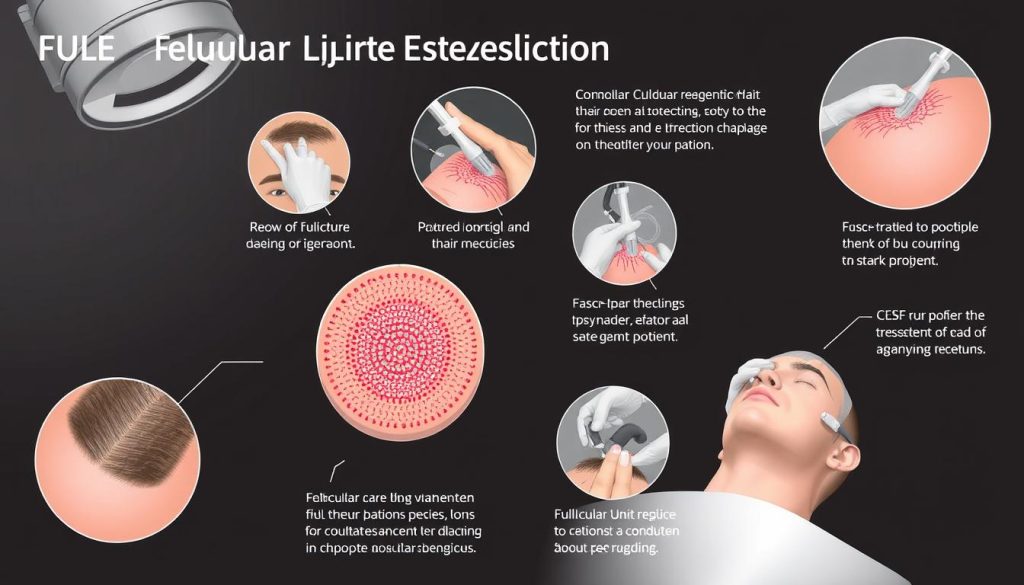
FUT Costs
Follicular Unit Transplantation (FUT), also known as strip surgery, is another common technique. It involves removing a strip of hair-bearing skin from the donor area.
The cost per graft for FUT is generally lower than FUE, ranging from $3 to $6. However, it involves a linear scar and a longer recovery period.
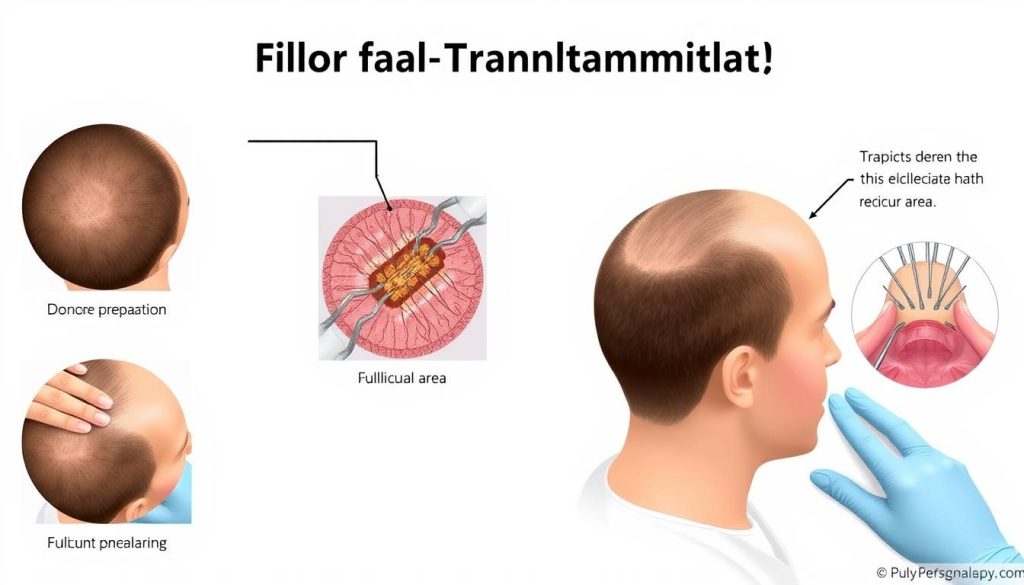
DHI Costs
Direct Hair Implantation (DHI) is a specialized form of FUE that involves directly implanting extracted grafts into the recipient area using a specialized tool.
DHI commands a premium price due to its precision and reduced handling of grafts, with costs ranging from $6 to $9 per graft.
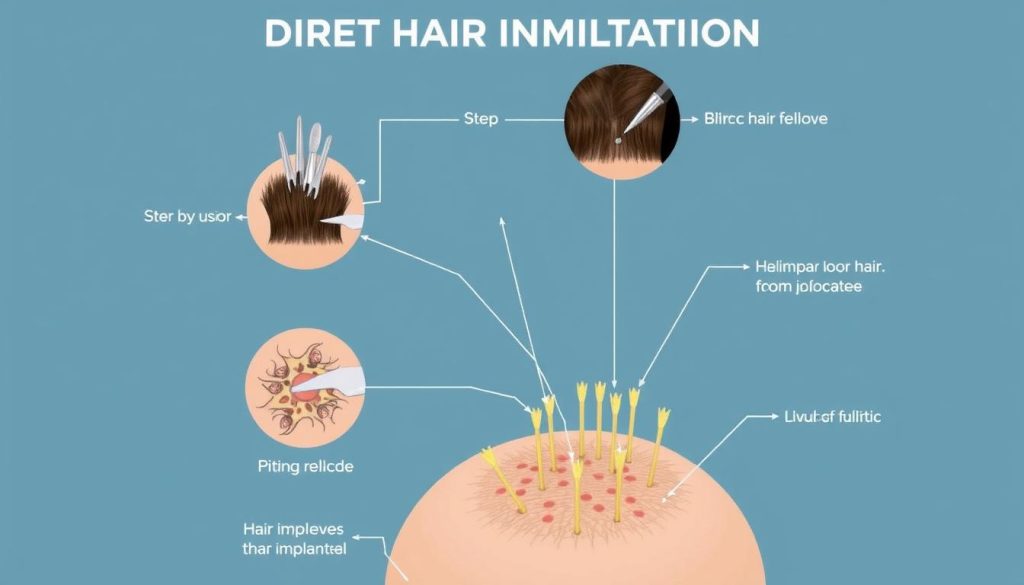
The choice of technique not only affects the upfront cost but also influences long-term expenses related to recovery, additional procedures, and maintenance. A surgeon’s expertise with specific techniques can also impact pricing, with specialists in advanced FUE or DHI methods often charging more.
Understanding these costs and their implications is crucial for individuals considering hair restoration. By comparing the costs and benefits of each technique, patients can make informed decisions that best suit their needs and budget.
Pricing Based on Number of Grafts
Hair transplant pricing is typically structured around the number of grafts needed for the procedure. The cost per graft can vary depending on several factors, including the clinic, surgeon, and location.
Cost Per Graft Explained
The cost per graft is a crucial factor in determining the overall cost of a hair transplant. Most clinics charge between $3 to $9 per graft, with the average cost being around $5 to $7 per graft. As the number of grafts increases, the cost per graft often decreases, creating a tiered pricing structure.
Small Procedures (1,000-2,000 Grafts)
Small procedures typically involve between 1,000 to 2,000 grafts and are suitable for minor thinning or receding hairlines. The cost for these procedures can range from $4,000 to $8,000.
Large Procedures (3,000+ Grafts)
Large procedures involve 3,000 or more grafts and are designed for extensive hair loss or creating significant density. The cost for these procedures can range from $10,000 to $20,000 or more.
The number of grafts needed is determined based on the extent of the balding area, desired density, and quality of the donor area. It’s essential to consult with a qualified surgeon to determine the appropriate number of grafts for your specific hair loss situation.
When evaluating the cost of a hair transplant, it’s crucial to consider the qualifications and experience of the surgeon, as well as the clinic’s facilities and reputation. A thorough consultation can help you understand the costs involved and ensure that you achieve the desired results.
Key Factors That Influence Hair Transplant Pricing
When considering a hair transplant, it’s essential to understand the multitude of factors that influence the final cost. The price of a hair transplant procedure is not determined by a single element; rather, it’s the result of a complex interplay of several key factors.
Surgeon Experience and Reputation
The experience and reputation of the surgeon play a significant role in determining the cost of a hair transplant. Highly sought-after surgeons with extensive experience and proven results often charge premium rates due to their expertise and the high demand for their services.
Clinic Location and Facilities
The geographic location of the clinic and the quality of its facilities also significantly impact the pricing. Clinics located in major metropolitan areas and affluent neighborhoods typically charge more due to higher overhead costs. Additionally, state-of-the-art clinics that utilize the latest technology and equipment command higher prices due to the advanced nature of their services.
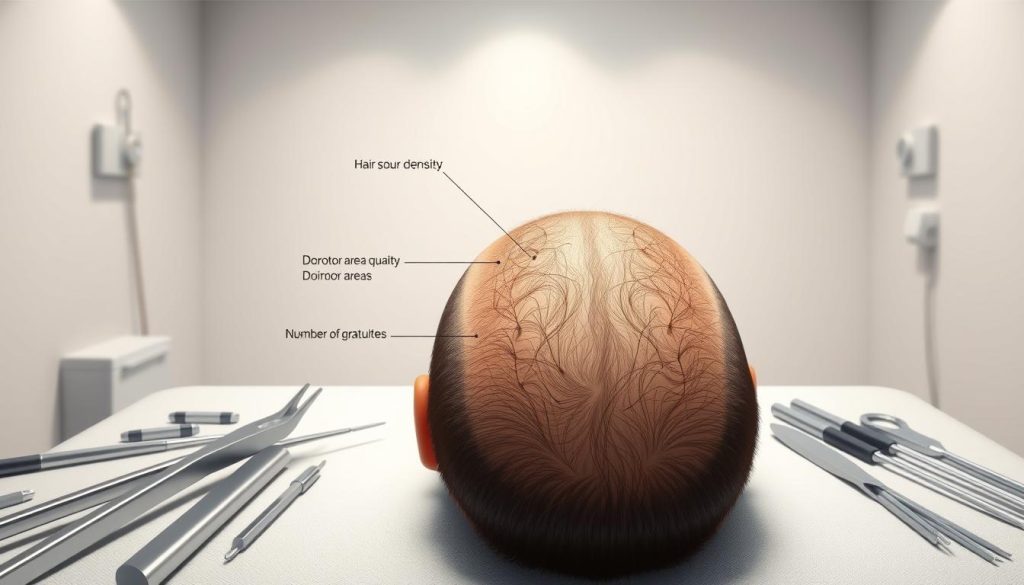
Extent of Hair Loss
The extent and pattern of hair loss directly affect the pricing of a hair transplant. More complex or advanced hair loss cases require more resources and expertise, thereby increasing the cost. The complexity of the hair loss pattern necessitates a more detailed and personalized approach, contributing to the overall expense.
Procedure Complexity
The complexity of the procedure is another critical factor that influences the cost. This includes factors such as challenging hairline designs, working around scars, or correcting previous transplant work. Such complexities require additional time, skill, and resources, thereby adding to the overall cost.
In addition to these primary factors, other elements can also impact the final cost of a hair transplant. These include:
- The number of grafts required
- The technique used for obtaining grafts
- The type of anesthesia used
- The inclusion of additional services like PRP (Platelet-Rich Plasma) therapy or laser therapy
Understanding these factors can help individuals make informed decisions about their hair restoration investments. By evaluating the importance of each factor in relation to their specific hair restoration goals, patients can determine whether premium pricing is justified for their needs.
Gender-Specific Hair Transplant Costs
The expense associated with hair transplants varies between genders due to different patterns of hair loss and treatment requirements. Understanding these differences is crucial for patients to make informed decisions about their hair restoration options.
Male Pattern Baldness Treatment Costs
Male pattern baldness treatments typically involve larger areas and more grafts, often exceeding 2,000 grafts. The average cost nationally for such procedures ranges between $8,000 and $12,000. The predictable progression of male pattern baldness allows for more standardized treatment approaches and pricing structures.
The cost per graft for male patients can vary, but on average, it falls within the range of $2.00 to $3.50 per graft. The total cost is influenced by the extent of hair loss, the technique used, and the surgeon’s expertise.
Female Hair Transplant Pricing
Female hair transplant procedures often involve treating diffuse thinning rather than complete baldness, typically requiring fewer grafts (between 1,000 and 1,200). Despite using fewer grafts, female hair transplants can sometimes cost proportionally more per graft, with total costs ranging from $6,000 to $8,000.
The technical complexity and precision required for female hair transplants contribute to their cost. Additionally, hormonal factors in female hair loss may necessitate additional treatments beyond the transplant itself, potentially adding to the overall cost.
Different techniques may be preferred for male versus female patients, with implications for pricing. For instance, female hair transplants often require more meticulous work to achieve natural-looking results, which can impact the overall cost.
For both male and female patients, evaluating cost estimates based on their specific pattern of hair loss and treatment goals is essential. It is crucial to consult with a qualified surgeon to determine the most appropriate treatment approach and to receive a detailed cost estimate.
Specialized Hair Transplant Procedures and Their Costs
Beyond standard scalp coverage, specialized hair transplant procedures offer tailored solutions for unique hair restoration needs. These advanced techniques cater to specific aesthetic goals, providing personalized hair restoration for various areas of the body.
Hairline Restoration Costs
Hairline restoration is a delicate procedure that requires precision and artistic skill. The cost for hairline restoration typically ranges from $3,000 to $7,000, depending on the extent of work needed. Creating a natural-looking hairline is crucial, and the premium pricing reflects the complexity and expertise required.
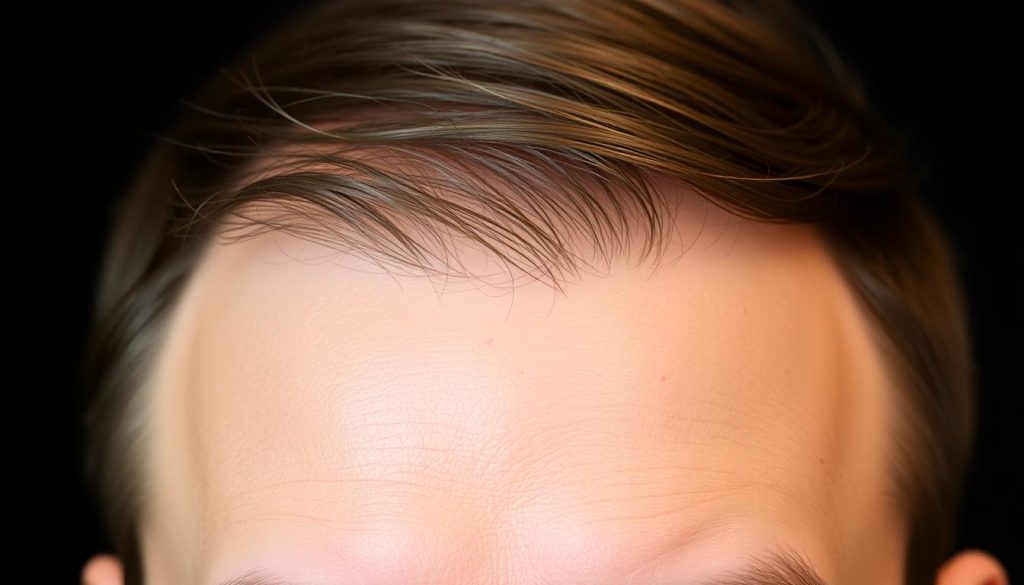
Crown Area Transplant Pricing
The crown area transplant is another specialized procedure that involves recreating a natural hair pattern in the circular area at the back of the head. Pricing for this procedure often ranges from $5,000 to $10,000 due to the challenging nature of achieving a seamless, natural look.
Eyebrow Transplant Expenses
Eyebrow transplants are highly specialized and require extreme precision. Despite using relatively few grafts (typically between 200-400), the cost can range from $3,000 to $6,000. The pricing reflects the detailed work involved in creating natural-looking eyebrows.
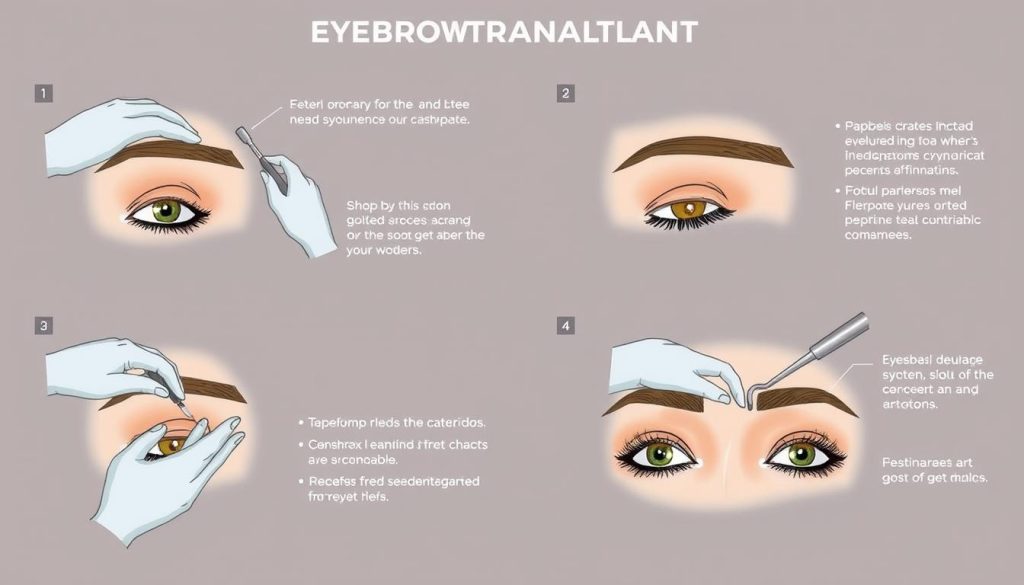
Other specialized procedures include beard and facial hair transplants, which can cost between $3,000 to $7,000, and scar coverage transplants, where pricing varies widely based on the size and complexity of the scarred area. The expertise of the surgeon and the specific techniques used play a significant role in determining the final cost.
When considering specialized hair transplant procedures, it’s essential to evaluate the value based on the patient’s specific aesthetic goals and the provider’s expertise. Patients should consult with experienced surgeons to understand the costs and benefits associated with each procedure.
Insurance Coverage and Financing Options
Potential patients often inquire about the financial aspects of hair restoration procedures. Hair transplantation is considered a cosmetic procedure, and as such, it is typically not covered by health insurance. However, various financing options are available to make the procedure more affordable.
Insurance Coverage for Hair Transplants
In most cases, insurance does not cover hair transplant procedures as they are deemed cosmetic. Exceptions might be made for cases where hair loss is due to burns, trauma, or certain medical conditions. Patients are advised to consult their insurance providers to understand their specific coverage.
Financing Solutions for Hair Restoration
Several financing options are available to patients to help manage the cost of hair transplantation.
Medical credit cards, such as CareCredit and Alphaeon Credit, offer specific financing terms for cosmetic procedures. These cards allow patients to spread the cost over several months or even years, sometimes with promotional periods of no interest.
Many clinics offer in-house payment plans that enable patients to pay for their procedures over a period of 6 to 24 months. Some of these plans may not incur interest if paid within a certain timeframe.
Third-party financing companies specialize in medical procedures, offering longer repayment terms. However, these often come with interest rates that vary based on the patient’s credit score.
Some patients explore alternative financing methods, including personal loans, home equity lines of credit, or even 401(k) loans. Each of these options has its pros and cons, which should be carefully considered.
Clinics may offer package deals or discounts for upfront payments, military personnel, or returning patients. It’s essential for patients to inquire about such offers when consulting with their chosen clinic.
When evaluating financing options, patients should ask about interest rates, fees, prepayment penalties, and the total cost of financing over time. This information is crucial for making an informed decision.
By understanding the available financing options and their implications, patients can make their hair restoration investment more manageable and achieve their desired outcomes.
Hidden Costs to Consider
Understanding the full cost of a hair transplant requires considering more than just the procedure’s base price. Patients should be aware of the various additional expenses that can arise during and after the treatment.
Pre-Procedure Expenses
Before undergoing a hair transplant, patients may incur costs for consultations and diagnostic tests. Some clinics charge between $200-$500 for initial evaluations, which can include advanced hair and scalp analysis. Additionally, pre-operative tests such as blood work, EKGs for older patients, or scalp biopsies may be required, adding to the overall expense.
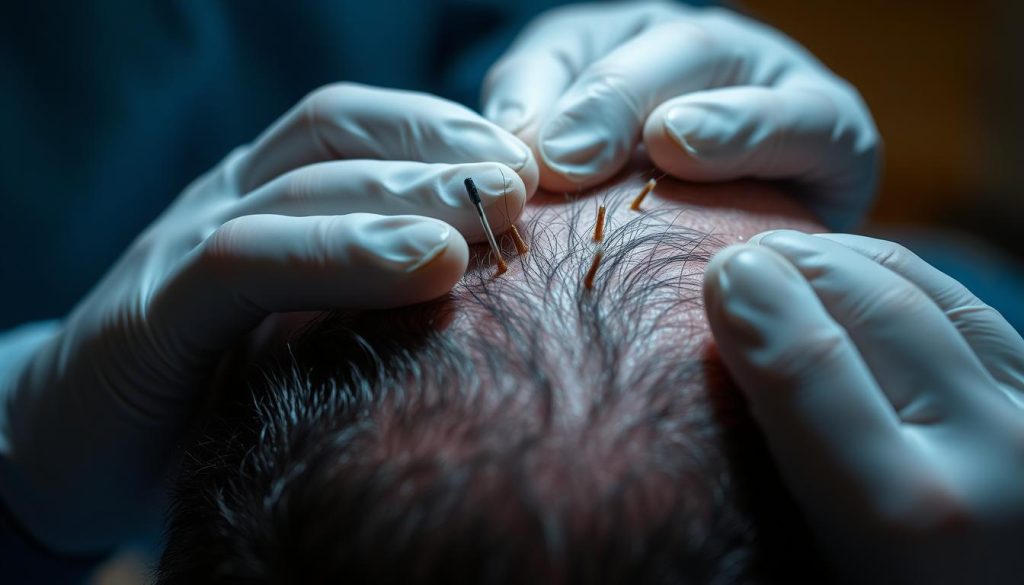
Post-Procedure Medications and Care
After the procedure, patients may need to purchase medications to aid in the healing process and manage any discomfort. These can include antibiotics, pain management drugs, anti-inflammatory medications, and specialized shampoos, potentially adding $100-$300 to the total cost. Furthermore, patients may be advised to use hair loss prevention medications like finasteride or minoxidil, which can cost $50-$100 per month as an ongoing expense.
Follow-up Appointments and Potential Additional Procedures
While initial follow-up appointments may be included in the procedure’s cost, long-term monitoring or addressing any complications may incur additional charges. There’s also the possibility of needing scar revision or touch-up procedures to achieve the desired results, which can add to the overall cost.
To avoid unexpected expenses, it’s crucial for patients to have a comprehensive discussion with their surgeon about what is included in the quoted price and what is not. Asking the right questions can help in understanding the total cost of the hair transplant procedure.
- What is included in the initial cost?
- Are there any additional fees for consultations or tests?
- What medications are required post-procedure, and are they included in the cost?
- How many follow-up appointments are covered, and what are the costs for additional visits?
- Are there any potential costs associated with addressing complications or unsatisfactory results?
By being informed about these potential hidden costs, patients can make a more accurate assessment of the total investment required for their hair transplant procedure.
Value vs. Cost: Choosing the Right Clinic
The true value of a hair transplant lies not just in the price, but in the quality of care and results. When considering a hair transplant, it’s crucial to choose a clinic with a solid reputation, skilled physicians, and a comprehensive team.
Evaluating Clinic Reputation
To evaluate a clinic’s reputation, look for board certifications, professional memberships in organizations like the International Society of Hair Restoration Surgery, and years of specialized experience. A reputable clinic will have a track record of delivering successful results for their patients.
Assessing Before and After Results
When assessing before and after photos, pay attention to hairline design, density, and natural appearance. Be wary of red flags like inconsistent lighting or angles, which can indicate manipulated or poor-quality results.
Reading Patient Testimonials
Reading patient testimonials and reviews across multiple platforms can provide valuable insights into a clinic’s strengths and weaknesses. However, be aware of potential fake reviews and look for patterns in the feedback.
During the consultation process, ask questions that help determine whether a clinic prioritizes results and patient satisfaction over sales. Evaluate the clinic’s follow-up care protocols and policies regarding revisions or touch-ups, which reflect their commitment to delivering successful results.
Ultimately, when weighing the cost of a hair transplant against potential benefits, consider the expertise, technology, and proven results offered by the clinic. While a higher cost may seem daunting, it may be justified by the quality of care and the likelihood of achieving the desired results.
International Options: Comparing USA Costs to Other Countries
The global hair transplant market offers various pricing options for patients willing to travel. Hair transplantation costs can vary significantly between countries, making international options an attractive consideration for many.
Hair Transplant Tourism
Hair transplant tourism has become a growing phenomenon, with patients traveling to countries like Turkey, Mexico, and Thailand for more affordable procedures. Countries with specialized hair transplant industries can offer lower prices while maintaining reasonable quality.
For instance, Turkey has emerged as a popular destination for hair transplants, with costs ranging from $1,500 to $4,000. Mexico and Thailand also offer competitive pricing, with costs between $2,500-$5,000 and $3,000-$6,000, respectively.
Quality and Safety Considerations
While cost is a significant factor, the quality and safety of the procedure are paramount. Patients must research international clinics thoroughly, checking for international accreditations and surgeon credentials. Authentic patient reviews can also provide valuable insights into a clinic’s reputation.
However, seeking treatment abroad comes with potential risks, including language barriers, different regulatory standards, complications during travel, and challenges with follow-up care. Patients should carefully weigh these factors when considering international options.
Practical considerations for medical tourism include total costs when factoring in travel, accommodations, time off work, and potential return visits. A balanced perspective is necessary to determine when international options make sense and when the convenience and oversight of US-based care justify the higher cost.
Ultimately, patients must make an informed decision based on their individual needs and priorities. By carefully evaluating both domestic and international options, individuals can choose the best course of treatment for their hair loss.
Making Your Hair Restoration Investment Worthwhile
Maximizing the outcome of your hair restoration investment requires careful consideration and planning. The art of hair restoration surgery depends on the artistic hairline design by the surgeon, meticulous harvest and placement techniques employed by experienced hair technicians, and adherence to the postoperative care instructions.
To ensure a successful hair transplant procedure, it’s crucial to start with a comprehensive consultation. Patients are advised to consult with multiple providers to find the best match for their specific needs and goals. This initial step lays the foundation for a satisfying experience.
Proper pre-procedure preparation is also vital. This may include following medical recommendations and potentially using treatments like minoxidil or PRP therapy to optimize conditions for successful growth. After the procedure, meticulous adherence to post-procedure care instructions significantly impacts graft survival and ultimate results.
Patience is essential during the growth process, as final results take 12-18 months to fully manifest. Complementary treatments and maintenance protocols can enhance and preserve results over time, ensuring that the investment yields long-term satisfaction.
Understanding what your specific hair restoration procedure can and cannot achieve is crucial. Realistic expectations help patients appreciate the value of their investment. The long-term benefits, including psychological well-being and improved quality of life, make the financial investment worthwhile for many patients.
In conclusion, a successful hair transplant involves more than just the procedure; it’s about creating a natural-looking hairline that restores confidence. By choosing the right clinic, following pre- and post-procedure instructions, and maintaining realistic expectations, individuals can maximize their return on investment in hair restoration.
FAQ
What is the average cost of a hair transplant in the USA?
The average cost of a hair transplant in the USA can range from ,000 to ,000, depending on the technique used, the number of grafts required, and the clinic’s location.
What factors influence the cost of a hair transplant?
The cost of a hair transplant is influenced by several factors, including the surgeon’s experience and reputation, clinic location and facilities, extent of hair loss, and procedure complexity.
How does the number of grafts affect the cost of a hair transplant?
The number of grafts required for a hair transplant significantly affects the overall cost. Generally, the more grafts needed, the higher the cost. Small procedures (1,000-2,000 grafts) tend to be less expensive than larger procedures (3,000+ grafts).
What is the difference between FUE and FUT hair transplant techniques?
FUE (Follicular Unit Extraction) and FUT (Follicular Unit Transplantation) are two common hair transplant techniques. FUE involves extracting individual follicular units, while FUT involves removing a strip of hair-bearing skin. FUE is generally more expensive than FUT.
Does insurance cover hair transplants?
In most cases, insurance does not cover hair transplants as they are considered cosmetic procedures. However, some clinics may offer financing options or payment plans to help make the procedure more affordable.
What are the hidden costs associated with hair transplants?
In addition to the procedure cost, patients should consider hidden costs such as pre-procedure consultations and tests, post-procedure medications, and follow-up appointments.
How can I choose the right clinic for my hair transplant?
To choose the right clinic, evaluate the clinic’s reputation, assess before and after results, and read patient testimonials. It’s also essential to consider the surgeon’s experience and qualifications.
Are there any financing options available for hair transplants?
Yes, many clinics offer financing options or payment plans to help make hair transplants more affordable. Patients can also explore third-party financing companies that specialize in medical procedures.
